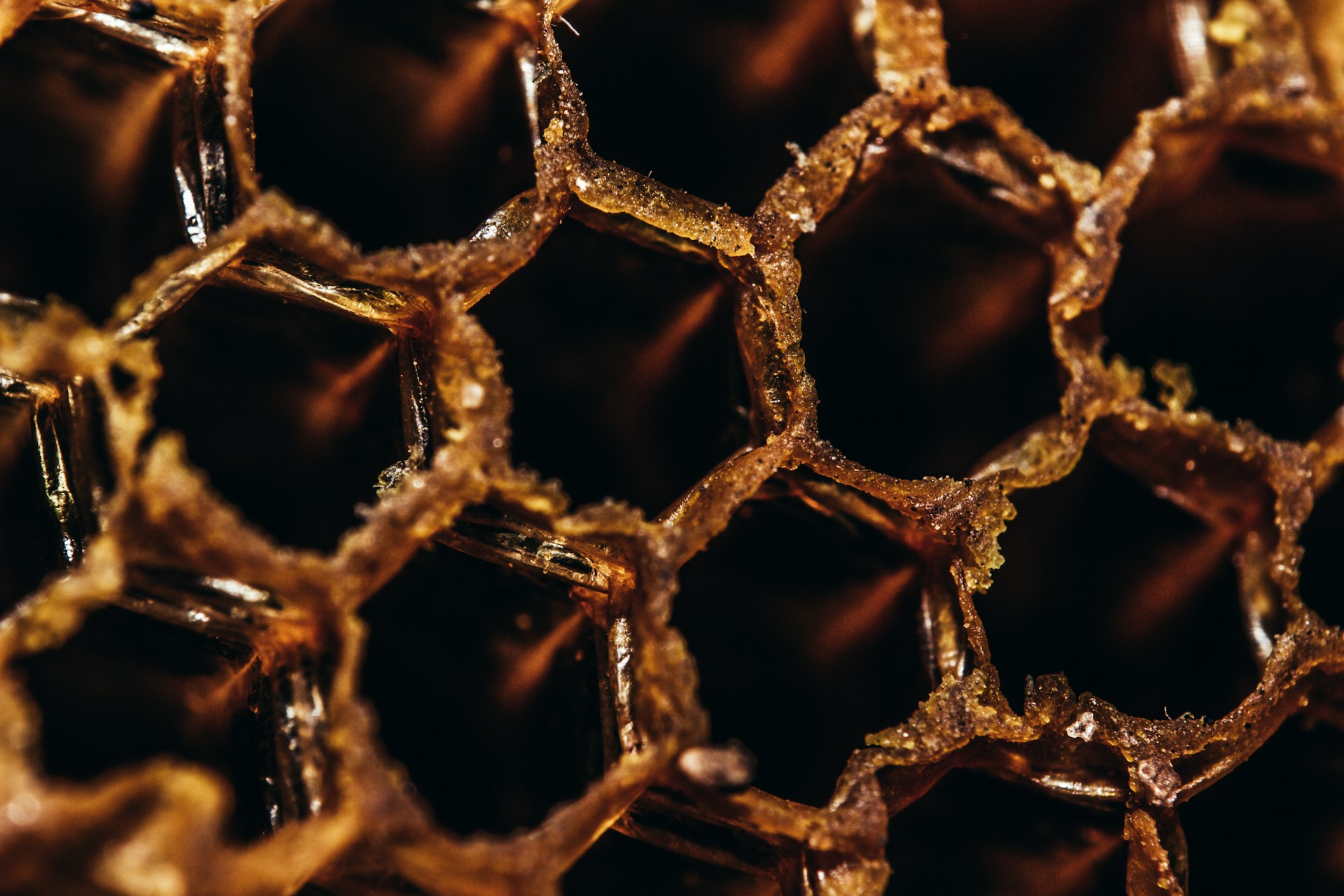Deep within the hive, a marvel of engineering awaits. The honeycomb, a intricate structure built by honey bees, is a testament to the ingenuity and organization of these tiny creatures. In this blog post, we’ll take a closer look at the amazing architecture of honeycombs and explore what makes them so remarkable.
A Complex Structure
A honeycomb is composed of hexagonal cells made from wax, which is produced by the bees themselves. These cells are used to store honey, pollen, and brood (bee larvae), and are arranged in a specific pattern to maximize storage capacity and structural integrity. The hexagonal shape of the cells allows for maximum strength while using minimal materials, a true masterpiece of natural engineering.
How Bees Build Honeycombs
The construction of a honeycomb is a communal effort, with thousands of bees working together to create this intricate structure. The process begins with a single bee creating a small wax scale, which is then added to the growing comb. As more bees contribute to the structure, the comb begins to take shape, with the hexagonal cells forming a strong and stable framework.
The Importance of Honeycombs
Honeycombs are more than just an impressive architectural achievement; they are also crucial to the survival of the hive. The comb provides a safe and organized space for the bees to store food, raise their young, and communicate with each other. Without the honeycomb, the hive would be unable to function, and the bees would be unable to thrive.
Conclusion
The amazing architecture of honeycombs is a testament to the ingenuity and organization of honey bees. These intricate structures are not only impressive to look at, but also play a crucial role in the survival of the hive. As we continue to learn more about the fascinating world of honey bees, we are reminded of the importance of preserving and protecting these incredible creatures and their habitats.
What do you think is the most fascinating aspect of honeycombs? Share your thoughts in the comments below!

